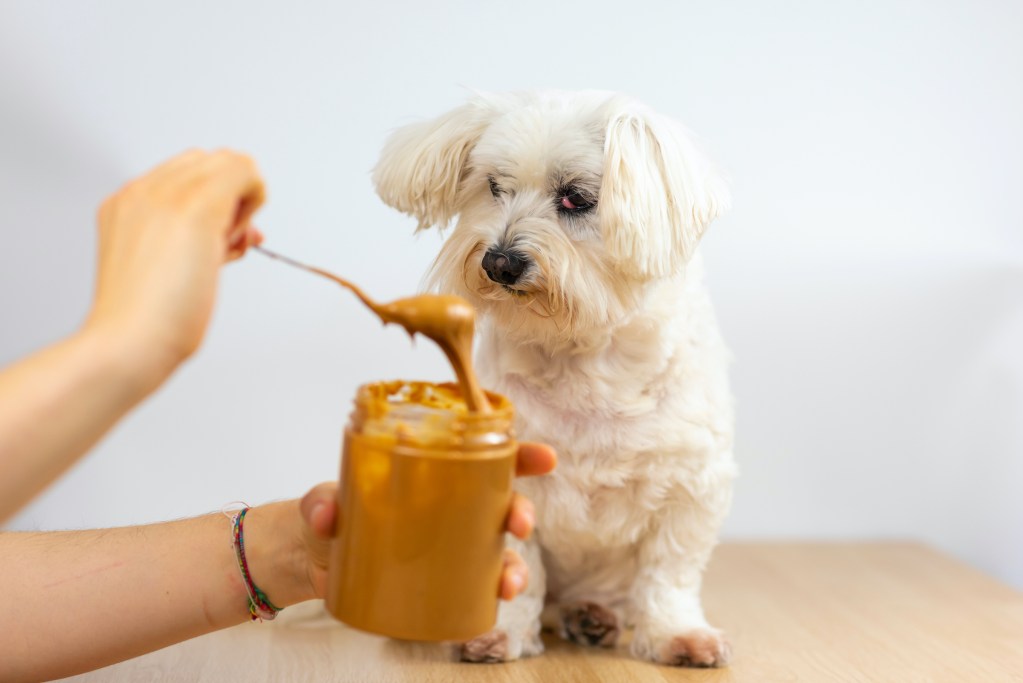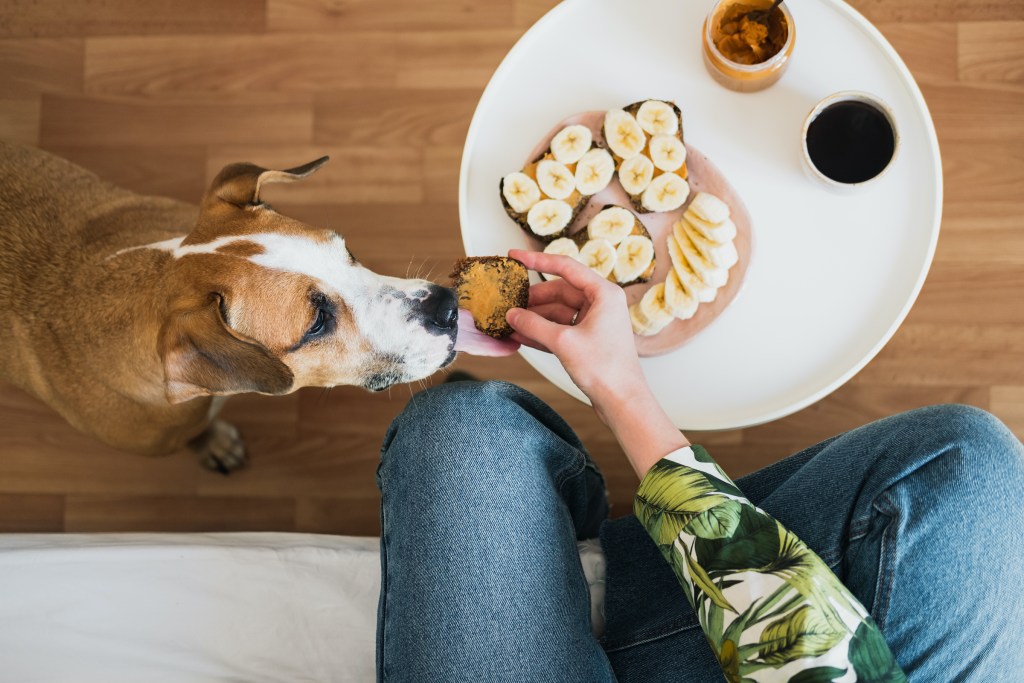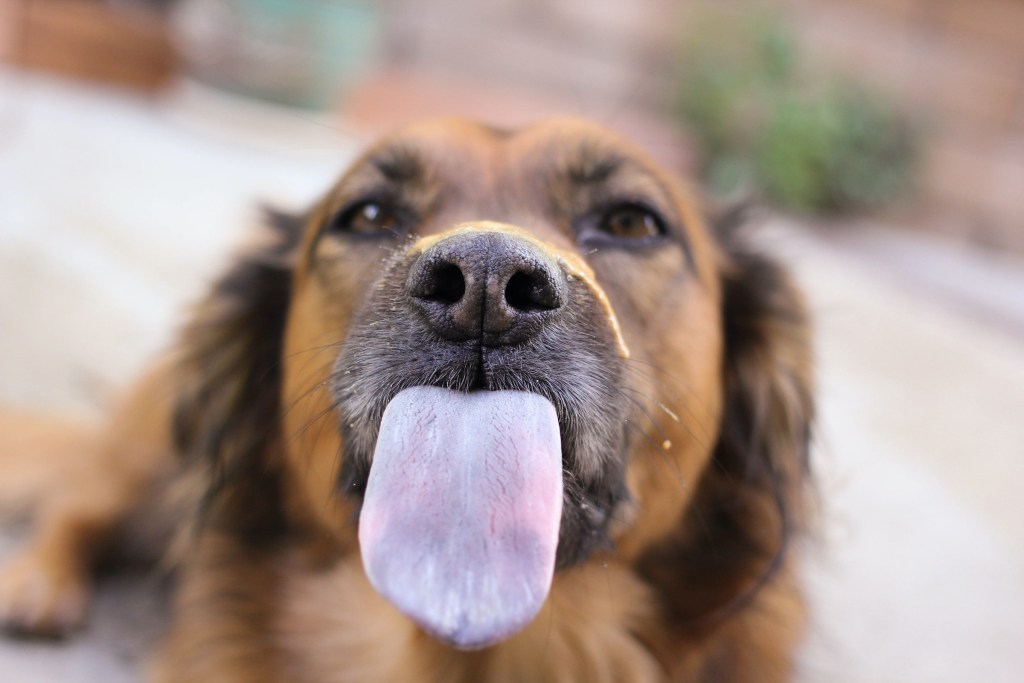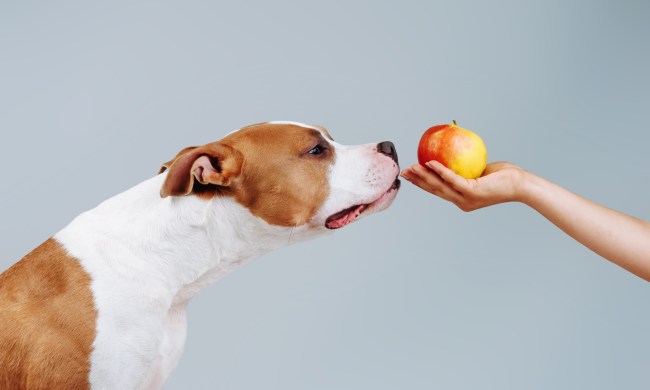It’s just the truth: dogs love peanut butter. It’s become a popular flavor of dog treat in commercial foods, and an even more popular ingredient for DIY dog treats. What a lot of people don’t know, though, is how to prepare this beloved delicacy.
Luckily, peanuts are not at all toxic to dogs like some other nuts. That doesn’t mean they’re without their risks, though, so be mindful when preparing any kind of peanut butter treat for your pup. With a little bit of focus and some fun recipes on hand, you and your buddy are in for a fun day of canine-friendly cooking.

Are peanuts bad for dogs?
As a rule of thumb, whole or diced nuts are not good for your dog. Not only can they pose a risk of choking or intestinal blockage, but they can be hard to digest too. Still, some nuts tend to be more dangerous for dogs than others due to high levels of certain toxins, like juglone in walnuts. Peanuts, though, do not contain any harmful chemicals or toxins.
The American Kennel Club lists unsalted, dry-roasted, or raw peanuts as the only safe type for pups to eat. Regardless, veterinarians advise against feeding your dog whole peanuts. There are safer ways for your dog to enjoy this treat — like eating peanut butter!

Can dogs eat peanut butter — yes or no?
Since peanuts are not toxic to dogs, explains Dr. Laura Gaylord and the National Peanut Board (NPB), most peanut butter types, smooth or chunky, are safe for dogs to eat. You’ll want to make sure there are no other dangerous ingredients hiding in your favorite brand of sandwich spread, though, as artificial sweeteners like xylitol (AKA birch sugar, which is toxic to canines) can hide in the trickiest of places. Many major brands of peanut butter, such as Jif, do not use xylitol in their products, but you’ll still want to be on the lookout.
Any nut or nut product should be fed to your dog sparingly — only as a treat and not a regular meal. The high-fat content in nuts can cause pancreatitis and other complications in severe situations, though practicing moderation will just about erase this chance (unless your dog has preexisting health issues, of course).
What happens if a dog eats peanut butter?
If a healthy adult dog eats xylitol-free peanut butter in moderation, nothing negative will happen! It’s as simple as practicing moderation and knowing the basics of canine nutrition. Don’t worry if it sounds like a lot — you’re practically already there!
How much peanut butter can a dog eat?
Now that we’ve established how essential moderation is in anyone’s diet — human or canine — it’s important to understand exactly what that looks like. The tricky part is that it will look different for every dog, so don’t hesitate to consult your vet or a canine nutritionist if you’re unsure how much peanut butter is a good amount.
Dr. Gaylord and the NPB advise dog owners to limit treats to 10 percent of their pup’s total daily diet. This ensures that the majority of their diet is nutritionally complete, which is important for a healthy, happy dog.

Peanut butter dog treat recipes
There are so many ways to prepare this yummy treat for your fur baby, but these are some of our favorites.
Slightly sweet peanut butter biscuits
Instead of relying solely on peanut butter for taste and sweetness, this fun recipe utilizes applesauce and your broth of choice to bring out the flavor palette. You will need to set aside some time for mixing the dough and cutting out individual cookies, but your pup will appreciate the effort, especially with these flavors!
Peanut butter and jelly for dogs
Did you know this popular sandwich recipe is safe for dogs, too? As long as the peanut butter and fruit preserves are free of xylitol and other harmful ingredients, you absolutely can share this snack with your pup (via NPB). Just keep moderation in mind!
Frozen PB&B
For the cooler summer months, you can try the AKC’s recipe for frozen peanut butter as a treat for your dog. All you’ll need is peanut butter and bananas: just mash or blend them together, spoon into drops on a tray or in an ice cube mold and freeze! The waiting will be the hardest part.
Peanut butter cinnamon treats
This simple recipe requires only three ingredients: peanut butter, coconut oil, and cinnamon. You’ll want to melt the ingredients together on a double boiler, pour them into a mold, and let them freeze. Your pup will love the sweet taste and creamy texture!
DIY peanut butter cookies
Following this recipe will look and feel exactly like preparing cookies from scratch, including using a cookie cutter. You’ll start by combining peanut butter, eggs, whole wheat flour, and water into a dough, then rolling it flat for you to cut out. Then bake, cool, and serve!
Pumpkin peanut butter cookies
For a slightly more complex version of a peanut butter dog cookie, try out this recipe which features pumpkin and cinnamon, too. This combination of flavors is perfect for autumn, evenings, or anytime you and your pup are ready to get cozy.
PB & Bacon cookies
What could be better than peanut butter biscuits? What about peanut butter biscuits with bacon? These cookies are just as easy to make as any basic dog treat, but their special ingredient helps them go above and beyond. Dogs who love meat will be especially excited about this treat.
Which recipe are you going to try? You truly can’t go wrong with any of the choices here, but every dog will have a preference. You might have more fun with certain recipes, too, so why not give some a try?



